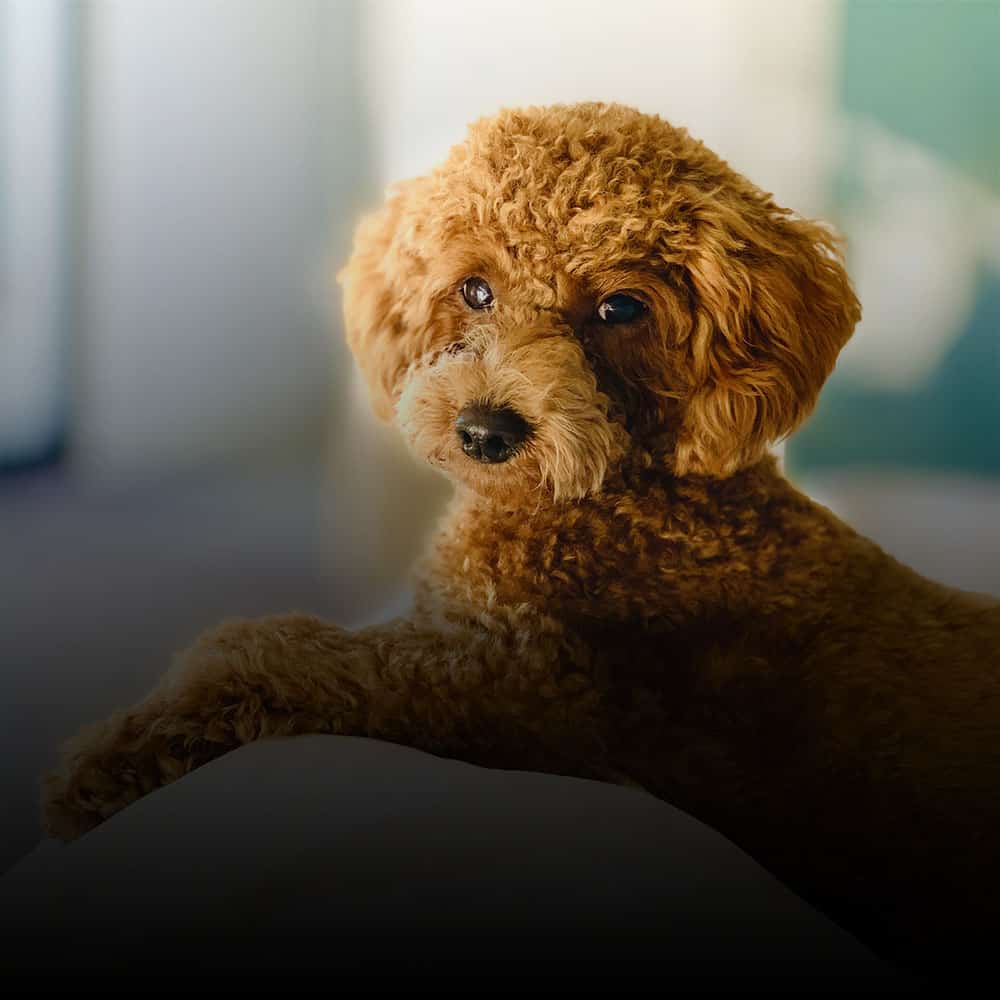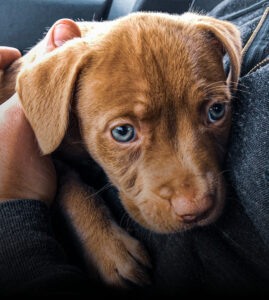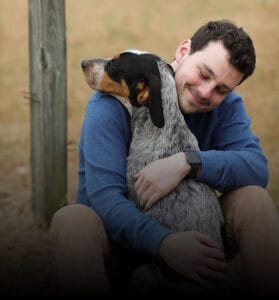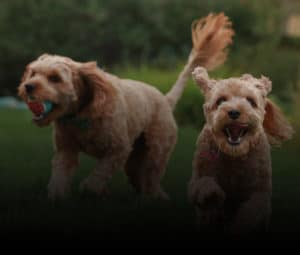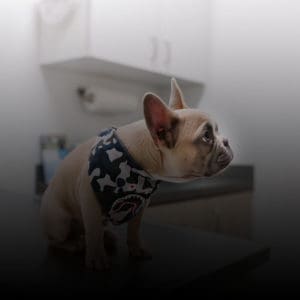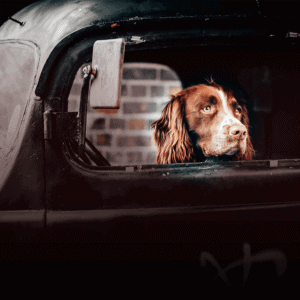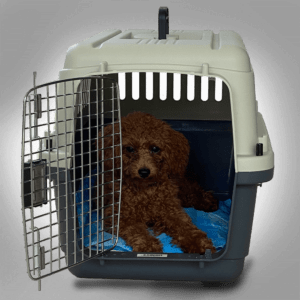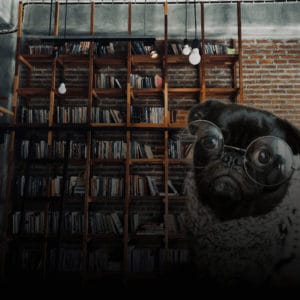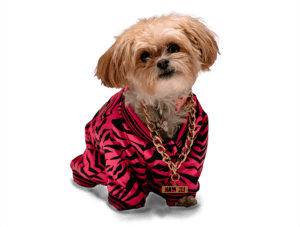Getting Your First Puppy Is Exciting
Puppies are cute – it’s a fact. They can also be a lot of work.
During the first few months of having a puppy, there is a lot to learn. Puppies need to be fed, toilet trained, vaccinated, exercised and played with. Plus, you will need supplies, special puppy food and plenty of toys.
In fact, raising a puppy is almost a full-time job. But with some preparation, you can nail the puppy parent duties and get back to having fun instead.
To help you get started, here are six things you need to know before getting your first puppy.
1. Preparation is the key to success
When undertaking anything new in life, it’s always a good idea to be prepared. Welcoming a new puppy into your home is no different.
A good place to start is with supplies.
Think of getting a puppy as like bringing a baby home for the first time. There are certain items that you will absolutely need to have to make sure the baby is safe and well taken care of.
So, let’s take a look at the basics – food and water.
Dogs need bowls to eat and drink out of. This means you will need to get two bowls (stainless steel is best) and a non-slip mat that can be easily cleaned.
Puppies can be messy eaters and drinkers, so the mat should keep your floor clean. Although it can’t be guaranteed.
Next, your little pup will need a cosy place to sleep.
When it comes to bedding for dogs, there is a whole world of options to choose from. Most importantly though, it needs to be comfortable and safe for your pup.
It’s worth considering the breed when buying bedding because your little pup could grow up into a big dog. If this is the case, go for a larger size dog bed to save money and avoid confusing your puppy with too many changes.
Puppies also need to be walked, so you will have to get a collar and a lead. Just make sure the collar doesn’t irritate your pup’s neck.
And if you live in a place with a cold climate, you might want to think about getting a fitted dog coat or jumper to keep your pooch warm. There is a big market for puppy apparel, with items available to suit all budgets and styles.
Of course, these are just the basic supplies that you need and there is much more that goes into taking care of a puppy. But it’s a good place to start.
2. A puppy friendly home is a happy home
Puppies are curious animals.
They like to sniff and get up close to things (and people) that interest them. It’s part of what makes having a puppy so great, but it can be risky if your home is not puppy friendly.
This is where puppy-proofing comes in.
To successfully puppy-proof your home you have to think like a puppy. Take a look around to spot items that could be harmful. Then move them out of the way or introduce safety measures.
The same applies to any valuables or clothing. Puppies like to chew and play, and they will happily use your new shoes as a toy if you’re not careful. So, if in doubt, move it out.
Here’s a useful checklist for puppy-proofing your home:
- Electrical wires – move them out of reach so your puppy can’t chew them
- Use childproof latches on cupboards – especially where cleaning products or medicinal supplies are kept
- Keep the toilet lid closed
- Put away any choking hazards, like pieces of Lego, coins or paperclips
- Keep sharp items out of reach e.g. knives and scissors
- Move houseplants out of reach
- Secure rubbish bins
If you have a garden, it will also need puppy-proofing.
Here’s how:
- If you don’t already have a fence, install one
- Designate an area for the puppy toilet – this will involve puppy training
- Keep the garden clean and tidy with mown grass
- If you use pesticides or insecticides, keep your dog away from the garden
- When there is hot weather, make sure there is some shade and water available
And last but not least, always supervise a puppy in a garden. Especially during the training phase.
3. Puppies need to be groomed
Puppies are growing creatures with hair, teeth and nails. This means they need to be groomed and, as the owner, it’s your job to make sure your puppy is well taken care of.
Yes, there are dedicated doggie spas that do grooming. But for most people, the cost is a big barrier. Plus, grooming can be a fun way to bond with your puppy.
First, let’s talk hair.
Most dogs love to have their hair brushed because of the relaxing massage effect. It’s also an important part of puppy care – particularly when they’re moulting. Or if you have a breed with long hair.
For long-haired dogs, a brush with long bristles is the best option. These types of dog also need to be brushed on a daily basis to avoid tangles. As well as having regular hair trims.
For short-haired dogs, a rubber toothed brush or short bristle brush should work well.
Then there’s shampoo.
As a general rule, dogs only need to be washed with shampoo every few months. Unless they get particularly dirty on a walk or decide to roll in something foul, like faeces from another animal (yes, this can happen).
Just be sure to use special dog shampoo. Puppies, and grown dogs, can have sensitive skin, so take care with the products you use.
The same applies to toothpaste for your dog’s teeth.
Human toothpaste is actually toxic for dogs because it contains Xylitol, an artificial sweetener. The effects of Xylitol on dogs are blood sugar drops and even liver damage.
Thankfully, there are plenty of special dog-friendly toothpaste products available. And taking good care of your puppy’s mouth will help to prevent gum disease and other health conditions in the future.
Next, dog’s nails need to be trimmed on a regular basis. You can start trimming a puppy’s nails from around six weeks.
For this grooming task, you can choose to do it yourself or take your puppy to a professional trimmer. Keep in mind that nail trimming is important to stop nail overgrowth or breakage that can cause pain for your pooch.
It can also be a delicate job, so if you decide to do it at home it makes sense to invest in a good pair of dog nail clippers. Preferably stainless steel.
4. Puppies like to play – a lot
Playtime is a big part of having a puppy.
Puppies have lots of playful energy, which is a lot of fun for you – most of the time anyway. Occasionally it can be tiring, but it’s all part of the job description as a puppy parent.
When puppies are still with the litter, play is central for developing social skills and they will play with their mother and siblings. But when they join your home, it will be you that they will want to play with.
Puppies start off playing by fighting and biting each other. Then, after a few weeks, they can start playing with balls and other toys.
When puppies are eight weeks old you can start to introduce the game of fetch.
This is good timing because it’s the age when most people welcome a new puppy into their lives. And it will distract your pup from wanting to play fight and bite you.
Playing games is good for the cognitive development of puppies and can help with training.
For example, in the game fetch, you can use words like, “stay” and “go”. This will get your pup used to hearing commands and understanding that they need to be followed.
Play is also crucial for your puppy’s physical development. Running, jumping, twisting and wrestling helps to develop muscles, agility and strength.
And there’s no better way to bond with your pup than with a fun play session.
5. Training takes time and energy
Training is one of the most important elements of having a puppy.
Get it wrong, or forget about it completely, and you’ll end up with a wild dog that doesn’t understand rules or boundaries. That’s not good for you or your pooch.
The only downside to training is that it takes time, energy and commitment.
Remember, your puppy is learning everything for the first time, so it’s down to you to teach him or her to pee in the garden, not on the sofa.
One of the most common questions from new puppy owners is, “What is the best training method?”
The short answer is: it depends. There are many different training methods out there – all with pros and cons.
To narrow it down, here are a couple of tried and tested techniques for training a puppy.
- Crate training – involves teaching a dog to become familiar with a safe, den-like space
- House line training – using a leash with the loop cut off to help direct a puppy out of danger/restricted areas
Crate training is mostly credited with helping to house train a puppy. It works because dogs don’t like to soil their own den and it’s a useful tool for restricting parts of the house.
Alternatively, house line training is a method used with young pups (from eight-weeks-old). The idea is to keep the little pup safe while it explores a new home by communicating some rules.
For example, if the front door is left open you can grab the house line and stop your pup from racing out of the house. This will communicate that running out of the front door is not allowed.
Just remember to have fun with puppy training. Yes, it takes time and energy, but it’s also a fun way to bond with your puppy and establish yourself as the master in the relationship.
6. You don’t have to figure out everything alone
Raising a puppy can be a daunting experience.
But thankfully many other people have done it before. Some have even become experts on the topic, like the Dog Whisperer, Cesar Millan, and British celebrity dog trainer, Steve Mann.
This means there is a wealth of knowledge out there to help you on your way to becoming a proud puppy parent.
Books are a great way to educate yourself and they are a valuable resource to go back to time and time again. Especially as your puppy grows into an adult dog.
You can find out more in our 5 best books for new puppy owners guide.
Then there is the internet.
What would we do without the internet, hey? Yes, it can be polarising and a rabbit hole of information at times, but it’s a handy tool for people getting a puppy for the first time.
If you have a burning question about puppy care, all you have to do is type it into Google and, hey presto, a world of answers are there for you.
When it comes to social media channels, YouTube is a great platform for getting puppy care advice. And many famous dog experts around the world have their own channel, so there is always something new to find.
Finally, ask your friends and family. Especially those that have dogs – they will have plenty of advice for you.
Looking for more puppy care inspir

